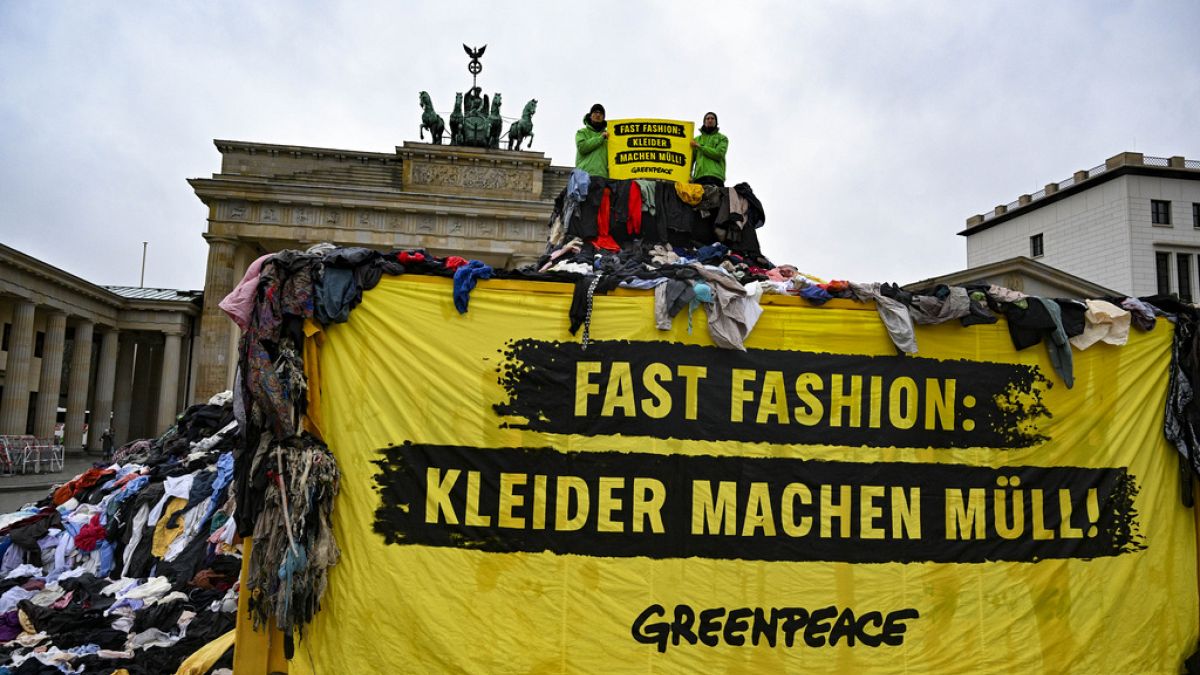How to prepare for the EU’s Digital Product Passport Law

Clothes and shoes are about to get a digital update, at least in Europe.
The European Union formally adopted the Ecodesign for Sustainable Products Regulation, or ESPR, in June. The legislation empowers the European Commission to set specific sustainable and ethical design and reporting requirements for nearly all products sold on the European market, including textiles and apparel items, detailed in the EU’s Strategy for Sustainable and Circular Textiles.
One key requirement is the Digital Product Passport, often abbreviated DPP. These digital tags will provide easy links to an online database of information including materials tracing and manufacturing information.
The details of what will be required in each DPP will be established by the European Commission by December 31, 2025, according to a webinar given in May. Businesses will have 18 months following that date to comply. Because the ESPR requirements apply to nearly all products placed on the European market, this means that even the smallest businesses will need to learn how to create and implement this technology.
What do DPPs look like?
“The principal objective of the digital product passport is to enable and simplify access to relevant information,” William Neale, circular economy adviser in the European Commission’s Directorate General of environment, said in the May webinar.
This means creating a Digital Product Passport is about more than generating a QR code, said supply chain tracking technology company TrusTrace in a new report on DPPs. The information carrier, which might be a QR code, RFID tag, NFC tag, or watermark, is just the final piece of technology that gives customers and other users access to this data.
What information is required?
In its report, TrusTrace identified 125 potential data points companies might need to address, according to ESPR guidelines. The points cover nine categories and will include information such as supply chain details, material composition, as well as information on a product’s circularity, compliance and sustainability (the latter framed within the bounds of the EU’s anti-greenwashing legislation, the Green Claims Directive).
Rather than wait for full details to be released at the end of 2025,TrusTrace said brands should establish a list of potential data points now so that they can begin collecting data.
Eventually, the type of data will be standardized, although the storage of DPP data will be “decentralized”, according to the ESPR text. That means each company is responsible for maintaining its own online repository of information and making that available to consumers and other parties. Failure to comply will result in penalties, according to the law’s final text, which could “include fines and time-limited exclusion from public procurement procedures.”
How to get started
TrusTrace is involved in an ongoing DPP pilot project launched in 2022 with Finnish textile company Marimekko and Swedish clothing brand Kappahl. Based on the pilot, which processed more than 3,000 garments, TrusTrace said in its report that the first step for brands is to evaluate whether they are currently collecting the data needed to comply with these new regulations. Then brands will need to determine when and where in the production process they want to collect data and how this data will be stored and accessed. Once brands better understand this process, they can then reach out to data management companies.
Through its pilot program, TrusTrace found that neither brand had all of the potential data points, and both brands said in the report that “obtaining the DPP data for the pilot was, in some cases, resource intensive and difficult.”
“Of course, technology can solve some of these problems, but at the moment the data is manually keyed in by people.”

Marimekko
Finnish textile company
To implement Digital Product Passports successfully, data collection will need to be baked into supply chains, Marjut Lovio, sustainability manager at Marimekko, said in the report.
“From my perspective, in order to pull all the data from a complex supply chain we need agents in between [stakeholders] to take care of the data management,” Marimekko said. “Of course, technology can solve some of these problems, but at the moment the data is manually keyed in by people.”
Marimekko is also “keeping an eye for the development of several options, from ‘forensic’ fibre-level physical tracers, through to software solutions,” according to the report.
Integrating DPPs may also affect production. Both brands in the TrusTrace pilot program had to work with their manufacturers to make sure that individual QR codes both brands were using could be sewn onto each type of garment, given that the same care tag is normally sewn onto larger batches of garments.
DPP pricing
It isn’t possible to broadly estimate the price of implementing DPPs, according to a 2024 study funded by the European Commission to investigate the costs and benefits of DPPs for small to medium enterprises.
“The multitude of options and elements to be considered require a thorough case-by-case calculation,” according to the report.
This is due in part to the newness and complexity of services involved, along with an unwillingness on the part of data management companies to pin down prices at this time, according to the EC study.
In addition to TrusTrace, European data management companies that offer DPP creation for the fashion industry include Vaayu, Protokol, Iimpcoll and Blue Cromos. Protokol said they would not be able to share a price list because costs were highly variable.
“As the shape of every business is unique, pricing can depend on a number of factors and vary as a result,” Lars Rensing, CEO of Protokol said in an email to Fashion Dive.
Helping a company create a roadmap for implementing DPP could take three to six working weeks, an Iimpcoll spokesperson said in an email to Fashion Dive. They declined to state specific prices.
TrusTrace also declined to state details about prices, saying that costs are dependent on the business size and scope of work needed.
Vaayu offers up to 50 SKUs for free and per-DPP prices starting at 3,000 Euros, or about $3,280 at current exchange rates, a Vaayu spokesperson said in an email to Fashion Dive.
“We also offer a free DIY DPP solution to ensure DPPs are attainable for all retail brands and businesses, in line with our mission to serve companies industry-wide,” the Vaayu spokesperson said.
Integrating the data into a DPP might cost around $100 per hour, Fredrik Malm and Josefin Lainevoo of BlueCromos told Fashion Dive in an email. But that assumes the data is already collected and available.
“With DPPs the sustainability communication to customers will become more streamlined.”

Sandra Roos
Vice president of sustainability at Kappahl
It is also possible that the European Commission might require DPP service providers to obtain certification, although it’s not yet clear what the criteria for such certification will be, said Holger Berg, vice-director of circular economy and co-head of research on digital transformation at the Wuppertal Institute, a sustainability think tank based in Germany.
Potential upsides
Both Kappahl and Marimekko said that there were benefits to implementing the DPP protocols, per the TrusTrace report. Not only do DPPs level the playing field and help fight greenwashing by standardizing sustainability comparisons, but they could be used as a tool to augment storytelling to consumers, both companies said in the report..
“With DPPs the sustainability communication to customers will become more streamlined,” Sandra Roos, vice president of sustainability at Kappahl, said in an email to Fashion Dive. “The Kappahl Group sees a big opportunity for customers using DPP to make better purchasing decisions.”
While burdensome at first, the fine-grained tracking of product data required by DPPs will not only ensure compliance with regulations, but will also help brands optimize inventory, protect themselves from counterfeiting and run better supply chains, Anja Sadock, head of marketing at TrusTrace, said in an email to Fashion Dive.
“If you think about it — having real-time production data across your entire portfolio — brings a world of opportunity,” Sadock said.“Having comprehensive supply chain data and a dynamic network view allows brands to proactively manage their supply chains to anticipate risks and prevent business disruptions. This enables them to act faster and with the right measures to reduce downtime and maintain operations.”
Related
Scotland’s biggest landowner is fashion brand billionaire
A European fashion tycoon is the biggest landowner in Scotland—and perhaps even the UK. Danish billionaire Anders Holch Polvsen named the Highlands' richest
EU targets food and fast fashion in new war on…
Polish presidency of the EU Council announced breakthrough in early hours after marathon overnight talks on food waste reduction targets and measures t
Fashion must-haves for your spring semester in Europe
Preparing to study abroad can be incredibly intimidating. With all the emotional turmoil you’ll face in the weeks prior, the last thing you�
Worldview: Ukraine’s Adaptive Fashion for the War Wounded
🇺🇦 Ukrainian Fashion Week presents adaptive clothing for combat injuries. More than 40 fashion brands presented their latest collections at Ukrainian Fash











